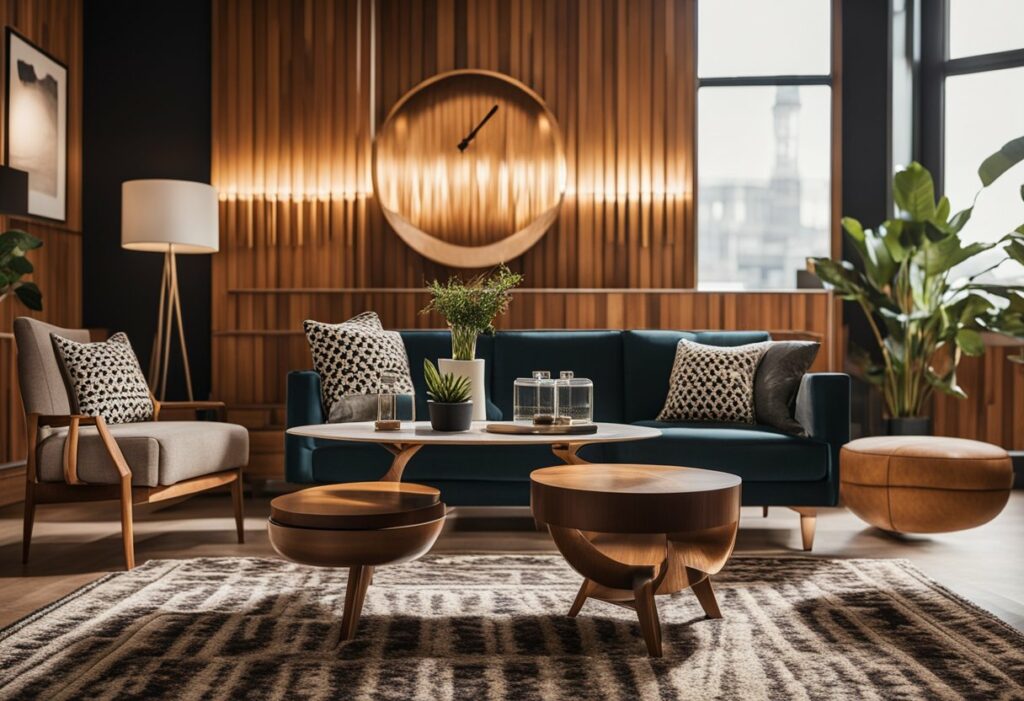1970s Interior Design Style: A Retro Revival
If you’re looking for a way to add some personality and flair to your home, why not consider incorporating elements of 1970s interior design? This retro style is making a comeback, with its bold colours, funky patterns, and textured finishes. Whether you’re a fan of mid-century modern or boho chic, there’s something about 70s design that’s sure to catch your eye.
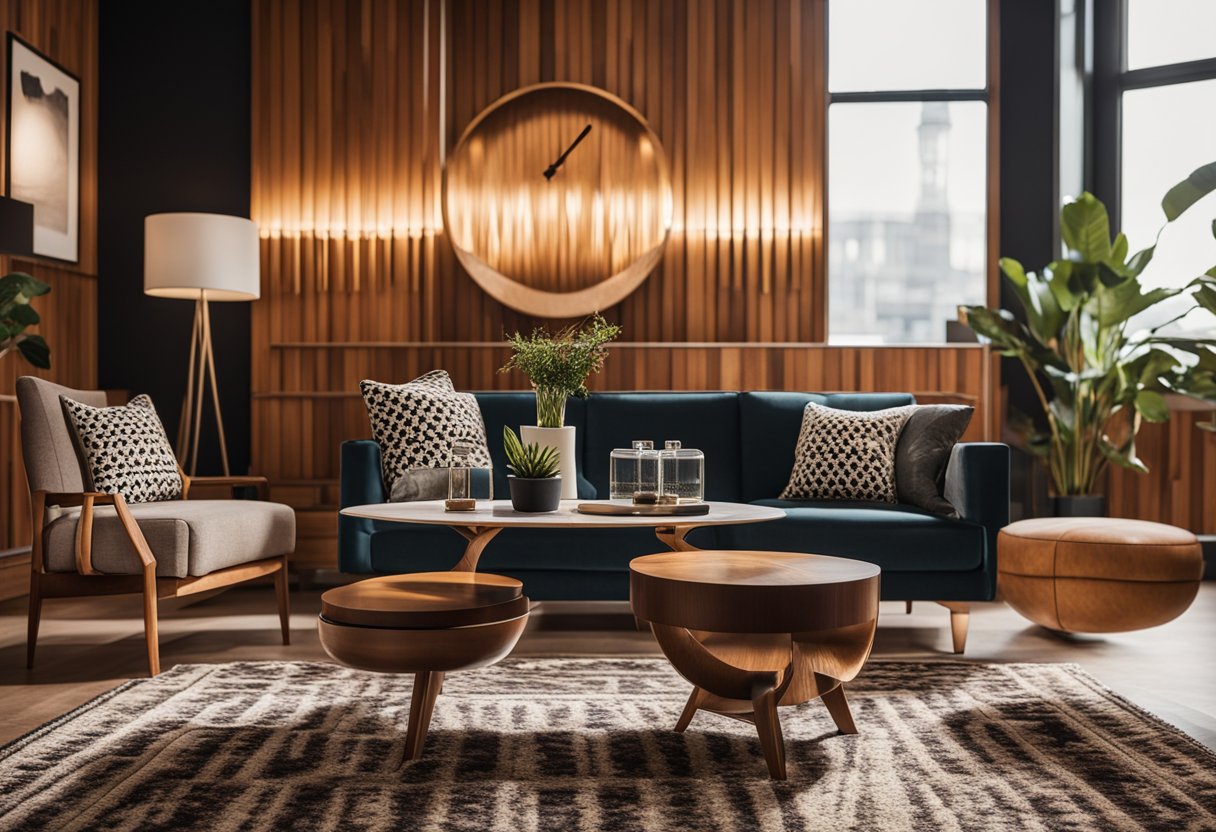
One of the defining features of 1970s interior design is maximalism. This style is all about going big and bold, with no shortage of patterns, colours, and textures. From shag carpets to macrame wall hangings, there’s no limit to the ways you can incorporate this trend into your space. And if you’re worried about going overboard, don’t be – the key to making maximalism work is to balance out the bold elements with neutral pieces and plenty of white space.
So if you’re ready to embrace your inner flower child and bring some 70s-inspired style into your home, read on for some iconic design elements and trends that are sure to inspire you.
Key Takeaways
- 1970s interior design is all about maximalism, with bold colours, patterns, and textures.
- To make the trend work in your space, balance out the bold elements with neutral pieces and white space.
- From shag carpets to macrame wall hangings, there are plenty of iconic 70s design elements to incorporate into your home.
Defining Features of 1970s Interior Design
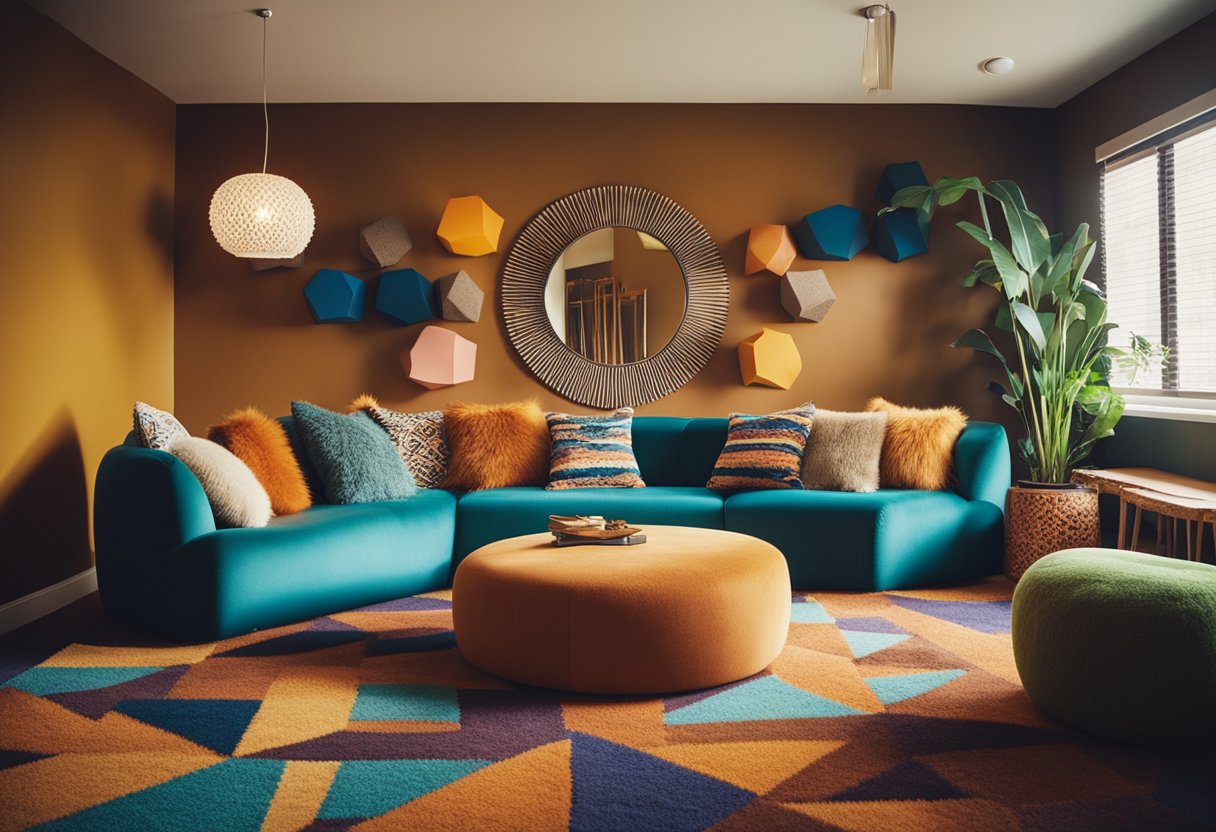
If you’re looking to create a retro-inspired interior, the 1970s is a great era to draw inspiration from. The 1970s was a decade of bold colours, patterns, and textures, with a focus on natural materials and earthy tones. Here are some of the defining features of 1970s interior design that you can incorporate into your home.
Colour and Pattern
The 1970s was all about bold colours and patterns. Think burnt orange, mustard yellow, and avocado green. These colours were often used in combination with each other to create a vibrant and eclectic look. Retro patterns, such as paisley, floral, and geometric designs, were also popular during this era. You can incorporate these bold colours and patterns into your home through wallpaper, soft furnishings, and accessories.
Furniture and Materials
The 1970s saw a return to natural materials, such as wood, rattan, bamboo, and wicker. These materials were often used in combination with each other to create an eclectic and bohemian look. Velvet was also a popular material during this era, particularly in rich jewel tones like emerald green and sapphire blue. You can incorporate these materials into your home through furniture, such as a rattan armchair or a velvet sofa.
Textures and Fabrics
Textures and fabrics were an important part of 1970s interior design. Shag carpets, wood panelling, and textured wallpaper were all popular during this era. Textured fabrics, such as corduroy and bouclé, were also commonly used. These textures and fabrics add depth and interest to a room, and you can incorporate them into your home through soft furnishings, such as cushions and throws.
Overall, 1970s interior design is all about bold colours, patterns, and textures. By incorporating natural materials, bold patterns, and textured fabrics into your home, you can create a retro-inspired interior that’s both stylish and comfortable.
Iconic 1970s Design Elements and Trends
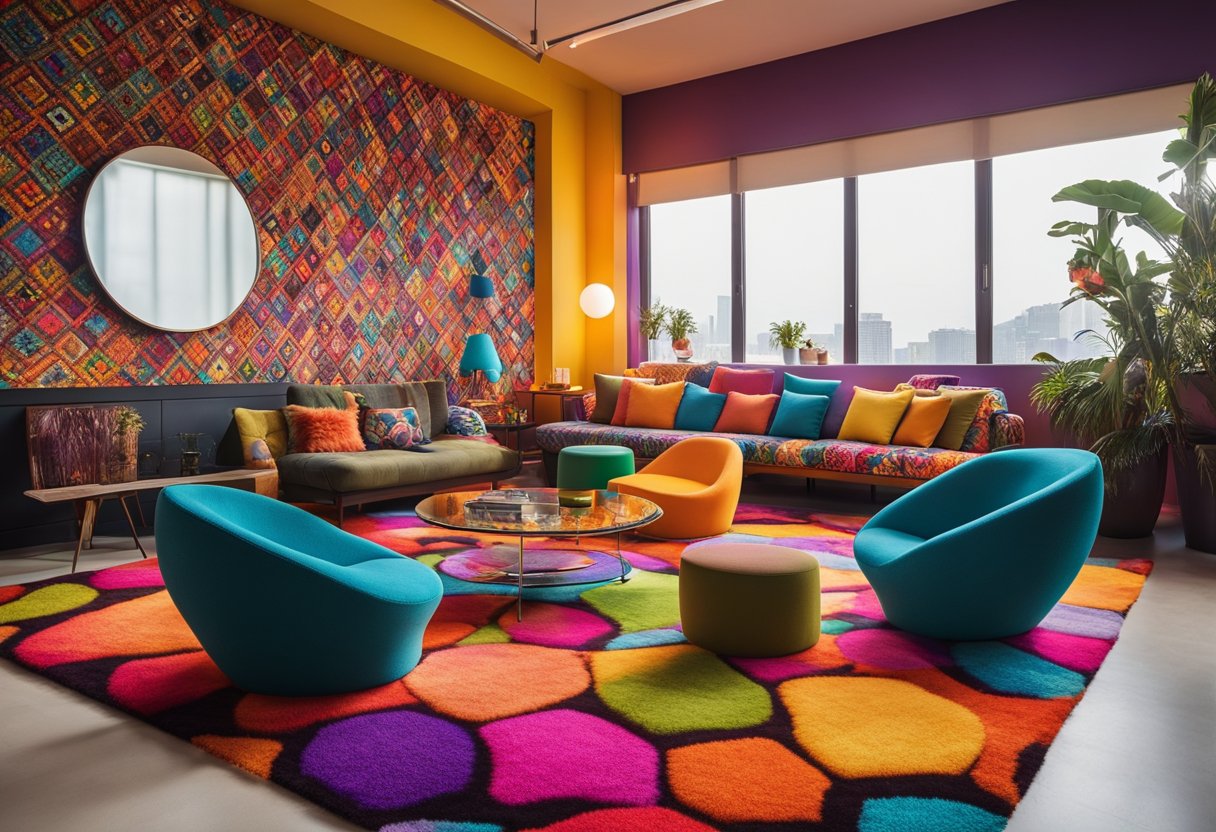
The 1970s was a decade of bold experimentation, and this was reflected in the interior design of the era. The iconic design elements and trends of the 1970s continue to inspire designers today. Here are some of the most influential design elements and trends of the 1970s.
Influential Designers and Pieces
Mario Bellini was one of the most influential designers of the 1970s. His Camaleonda sofa, with its modular design and soft, comfortable cushions, was a popular choice for many homes. The sofa’s versatility and comfort made it a staple of 1970s interior design and it continues to be popular today.
Houseplants were also a popular choice in 1970s interior design, with ferns being a particular favourite. The lush green foliage of ferns added a touch of nature to homes and helped to bring the outdoors inside.
The mushroom lamp was another iconic design piece of the 1970s. Its unique shape and soft, diffused light made it a popular choice for living rooms and bedrooms.
Popular Decor and Accessories
Macrame was a popular decorative element in 1970s interior design. The intricate knots and patterns of macrame added a touch of bohemian style to homes.
Terrazzo was another popular design element of the 1970s. This composite material, made up of marble, quartz, and other materials, was used for flooring, countertops, and other surfaces. Its unique speckled appearance made it a popular choice for adding texture and interest to homes.
Shag rugs were also a popular choice in 1970s interior design. Their plush texture and bold colours added warmth and comfort to homes.
Chrome was a popular choice for furniture and accessories in the 1970s. Its sleek, modern appearance added a touch of glamour to homes.
Geometric shapes were also a popular design element of the 1970s. Bold, geometric patterns were used on everything from wallpaper to textiles.
The disco era of the 1970s also had an impact on interior design. Homes were designed with entertaining in mind, with open-plan living spaces and seating areas for guests.
In conclusion, the 1970s was a decade of bold experimentation and innovation in interior design. The iconic design elements and trends of the era continue to inspire designers today. From Mario Bellini’s Camaleonda sofa to the mushroom lamp and macrame, the 1970s was a decade of unique and exciting design ideas.
Frequently Asked Questions
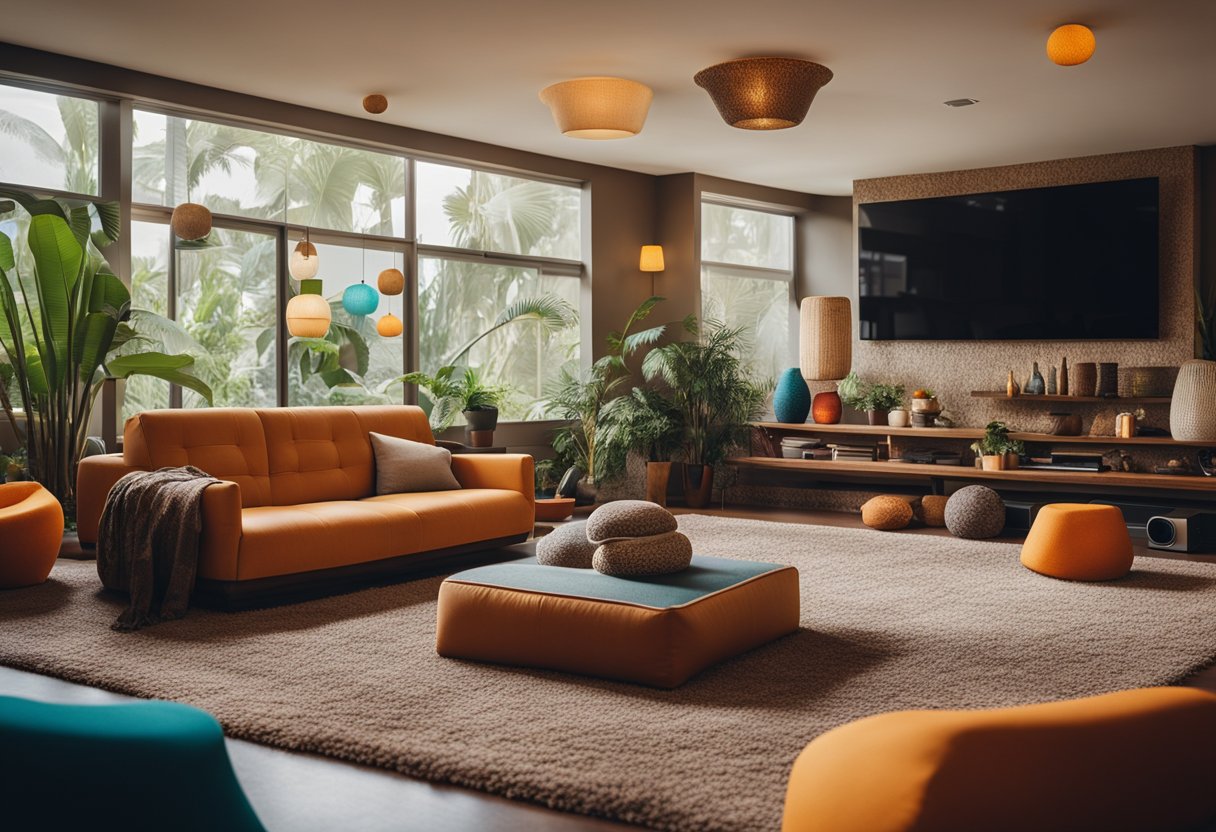
What are the hallmark characteristics of a 1970s living room decor?
The hallmark characteristics of a 1970s living room decor include bold colours, geometric patterns, shaggy rugs, and plenty of natural materials like wood and stone. The furniture was often low-slung and modular, with a focus on comfort and relaxation. Large windows and skylights were also popular, allowing for plenty of natural light to flood the space.
How can you recreate a 1970s style bedroom today?
To recreate a 1970s style bedroom today, start by incorporating plenty of bold colours and patterns, such as geometric prints and floral designs. Add a shaggy rug to the floor, and choose furniture with clean lines and natural materials like wood and rattan. Don’t forget to add plenty of plants to the space, as they were a popular decorative feature in the 70s.
What iconic furniture pieces define the 1970s interior design era?
Iconic furniture pieces that define the 1970s interior design era include the bean bag chair, the modular sofa, and the egg chair. Other popular furniture items included low-slung platform beds, rattan chairs and tables, and brightly coloured plastic chairs.
How does 1970s modern interior design differ from earlier design movements?
1970s modern interior design differed from earlier design movements in its focus on comfort and relaxation. Furniture was designed to be low-slung and modular, with a focus on lounging and relaxation. Bold colours and patterns were also popular, as were natural materials like wood and stone.
What design patterns are emblematic of the 70s aesthetic?
Design patterns that are emblematic of the 70s aesthetic include bold geometric shapes, floral prints, and paisley patterns. Other popular patterns included stripes, chevrons, and polka dots.
What are the defining features of a 70s style house exterior?
The defining features of a 70s style house exterior include clean lines, geometric shapes, and a focus on natural materials like wood and stone. Large windows and skylights were also popular, as were asymmetrical rooflines and open floor plans.

